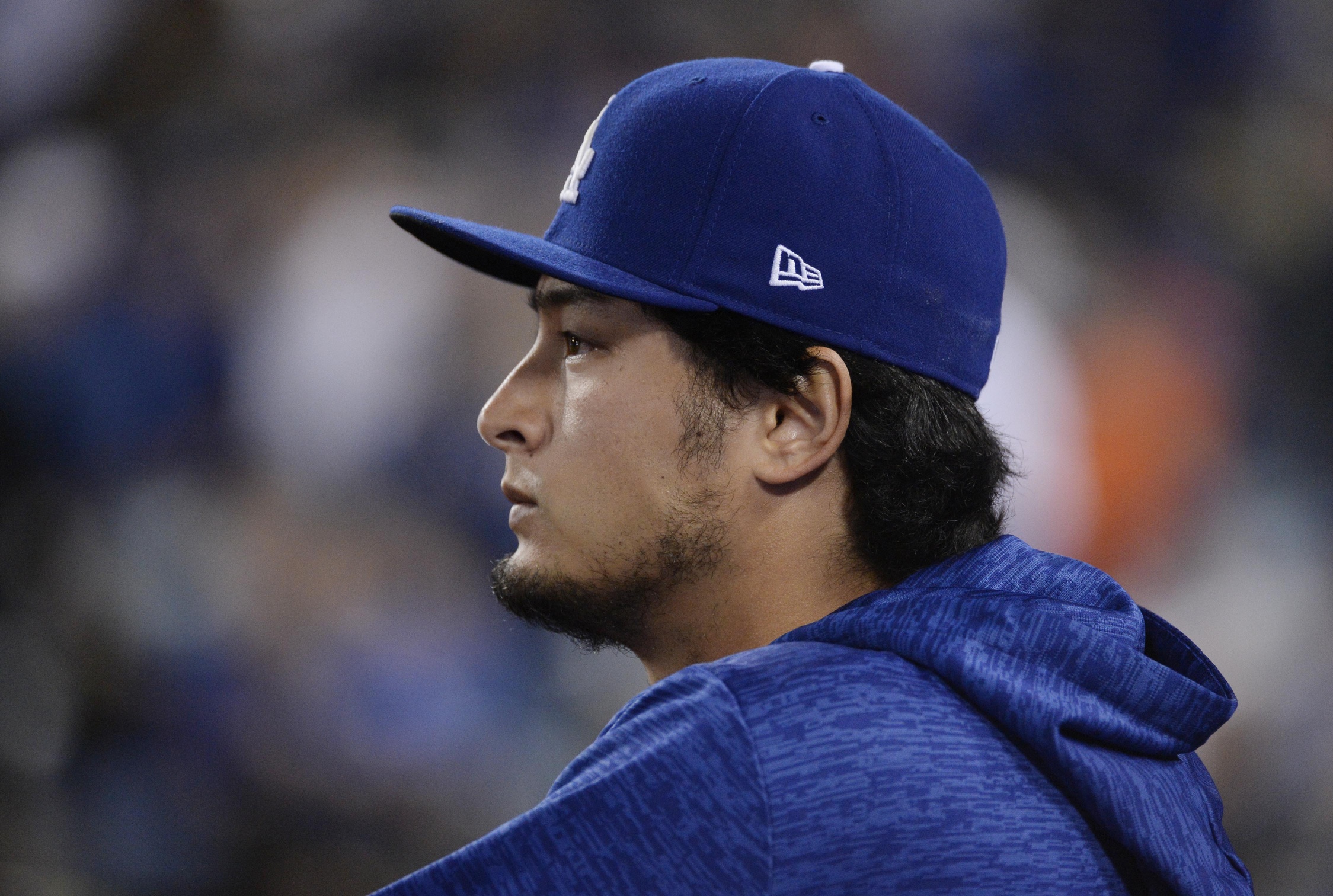After a brief spasm of activity where the Cubs filled out a spot in the rotation with Tyler Chatwood and a couple spots in the bullpen, we’re all sitting around watching the water boil again. Or not boil, however that phrase goes. I guess not boil, which is even more boring than watching it boil. Basically, we’re in the doldrums.
The offseason at the moment seems to hinge on whether the Cubs are going to take the plunge on Yu Darvish, or the much more scant chances of bringing Jake Arrieta back. Scott Boras hasn’t pressed the “mystery team” button on Arrieta yet, which is when you know things are about to happen. Hell, Boras can’t seem to get a “real” team in the running yet either.
The interesting quirk in that debate is that even though Darvish and Arrieta are basically the same age, with a difference of a few months, the Cubs are wary of the heavier workload that Darvish has under his belt. Including his time in Japan, Darvish has thrown 426 more innings than Arrieta, even if you include Arrieta’s minor-league workload.
How the Japanese league equates to the majors or minors here in stats is always up for debate. What we can safely say is they’re both professional ball, you’re still using your right arm in a stressful way, and while the goal may be development instead of just straight winning in the minors as it would be in Japan, it’s not like you’re taking the foot off the gas. Whether the Japanese league is equivalent to Double A or Triple A or higher, it’s throwing a baseball in anger.
So I began to wonder if there was some number, with total professional innings, where some pitchers have problems. The number I saw was 2,500. It’s not tried and true, but there are some examples.
The first name I thought of was Felix Hernandez, who at the moment has thrown 2,836 innings. He crossed the 2500 threshold in 2015. 2016 is where we saw his numbers just balloon, or if they were meant to be high, they sank. He struck out fewer hitters, he walked far more. He didn’t really recover much last year, as he spent the majority of it injured.
Another name would be Darvish’s teammate if he were to sign with Chicago, and that’s Jon Lester. Lester crossed the 2,500 professional innings plateau last year, and we saw he had injury problems for just about the first time, and his walks and WHIP rose significantly. We don’t know where he’ll go from here, and we pray that isn’t a harbinger, but that’s what happened when he got past 2,500 innings.
Adam Wainwright crossed that 2,500 River Styx in 2016. His WHIP that year went from 1.03 to 1.40; his walks per nine nearly doubled. And like Darvish, Wainwright already had injury problems.
Cole Hamels crossed that line this past year, and he was injured for a good portion of it as well. His strikeouts-per-nine were down nearly a third when he did pitch.
James Shields might be the scariest name on here. Shields got to 2,500 professional innings his first year in San Diego. You may remember that as the year he started to be detected from space, so strong were his radioactive signals.
This isn’t hard and true, as stated above. Ervin Santana got there two years ago, and his last two seasons in Minnesota have been fine to good. Zack Greinke totaled that in 2016 in Arizona, wasn’t terribly good, but certainly rebounded last year. Justin Verlander crossed this past season, and it sure didn’t look like it mattered much in October, did it? John Lackey passed it in 2013, pitched in the World Series, and put together more than acceptable seasons in St. Louis and here after that. CC Sabathia got there in 2011, if you can believe it. He had some rough years after that for sure, and then somehow unearthed a really good season last year.
But again, how many of these, other than Verlander and Greinke, were ever dominant again? If you’re throwing out $22-$25 million a year, you’d like dominant. And the jury is still out on Verlander, who only just crossed into that territory.
Darvish still has just short of two seasons worth of starts before he gets to 2,500 professional innings. But that would make the majority of a five-year deal, what he’s supposedly looking for, possibly very itchy. And if Lester is now going to be itchy after passing into that territory… well I don’t want to finish that sentence. I have no doubt that Darvish could be a good or representative pitcher after passing that mark, given his repertoire. He doesn’t need velocity with all the movement and deception. But you can only fork over so much money for “representative” before you’re in a crunch to make up for the “dominant” you’re not getting.
Lead photo courtesy Gary A. Vasquez—USA Today Sports
